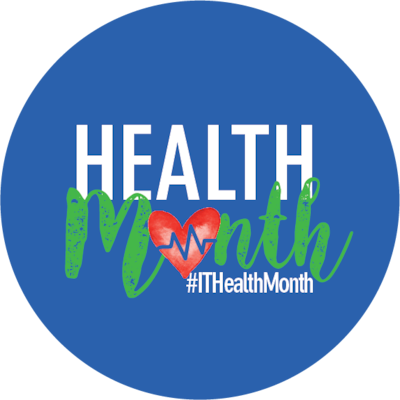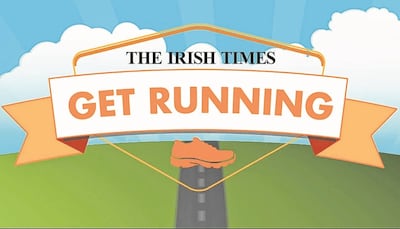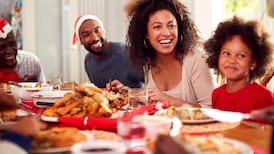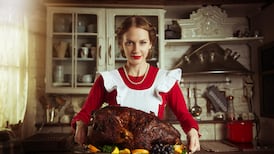I have finished my two weeks of pescatarianism and if I never saw a finny feed for the rest of my days I’d be content.

In fact, if Jesus himself was in the kitchen performing the miracle of the five loaves and two fishes I’d tell him I was grand, thanks.
I didn’t think it was humanly possible to eat so much chowder, fish pie, grilled salmon and prawn curry in just two weeks – but I did it, guys.
The bins constantly smell of fish and I don’t care what you say, it is no replacement for chicken in a curry. I am sick of the sight of the stuff.
What has become clear among the bin-fulls of silver fish packets is that I have yet to conquer my fear of not having something that was once alive on my plate. Over the last two weeks, instead of thinking more radically about beans, lentils and vegetables, more often than not I just replaced what was once meat with fish.
I am properly vegetarian now, clutching my Happy Pear cookbook and crying into my dhal
This week is a different ball game. I am properly vegetarian now, clutching my Happy Pear cookbook and crying into my dhal.
I take back anything bad I might have said about the Greystones twins – their recipes are straightforward, made with ingredients I don't have to Google and in portion sizes I don't need to double.
On the other hand, Nigel Slater’s Greenfeast – although very thoughtfully written and beautifully produced – has meals that are more like tapas and are not designed for a beginner like me.
What I have missed most over these last couple of weeks is chicken. It feels so strange to have a sandwich without it, and I have longed for the simplicity of frying it off with some vegetables for dinner.
I am beginning to struggle with my commitment to it, given I never started this for ethical reasons and was sceptical at best about how trendy meat-free diets have become.
It has got harder to bat off arguments about avocado airmiles and misaligned millennial ideologies. Where did your tin of chickpeas come from? Is your fish farmed in Ireland? Wouldn’t you be better giving up travelling?
My head is spinning. I don’t know the answers to those questions, and I don’t even know where to start looking for unbiased facts.
I’m beginning to think this all-or-nothing approach to meat eating doesn’t suit me, and although I’ll make it through the next month, I certainly won’t make it work in the long term – nor am I even sure if there is any value in it.
On the plus side, I have had some really tasty meals this week.
My housemate very thoughtfully made a separate pan of vegetarian chilli for me, using all the same ingredients (cumin, paprika, chopped tomatoes, carrots, peppers, onions) but replacing the mince beef with black beans and chickpeas.
Served with guacamole, sour cream and slices of lime it was sweet, and dare I say, better than the meaty version I remember.
I thought getting my head around the idea of a lentil moussaka was hard, but reading the labels for the origins of all my food purchases sounds worse
The problem is that most of my meals will look very similar to this – tins of beans or peas, fried up with vegetables and covered in spices and stock. There is very little variety in it.
Another downside is the awkward conversations and requests for special treatment you have to force on people who are offering you dinner at their home or a meal out in town.
It is not a very sociable dietary choice; it seems easier to avoid eating with others than to ask them to leave out the main ingredient from their communal dish or insist we eat in restaurants that cater better for me rather than them.
It has, though, opened up some really interesting conversations around biased information on the environmental impact of both Irish-grown meat and that of meat alternatives such as soy and nuts.
I haven’t got all the answers, not even a fraction of them, but I promise to use the next week to get to the bottom of some of it while also being mindful about where my lentils, beans and nuts are coming from.
I thought getting my head around the idea of a lentil moussaka was hard, but reading the labels for the origins of all my food purchases sounds worse.
What have I got myself into?
Niamh Towey is writing a weekly column about cutting meat from her diet – first by adhering to a pescatarian diet (i.e. a vegetarian diet, apart from fish).
Part 1: Embracing the challenge
Part 2: I feel a little . . . empty
Part 3: Crying into my dhal

Sign up for one of The Irish Times' Get Running programmes (it is free!).
First, pick the eight-week programme that suits you.
- Beginner Course: A course to take you from inactivity to running for 30 minutes.
- Stay On Track: For those who can squeeze in a run a few times a week.
- 10km Course: Designed for those who want to move up to the 10km mark.
Best of luck!












